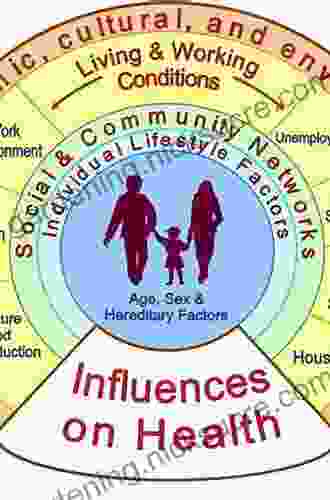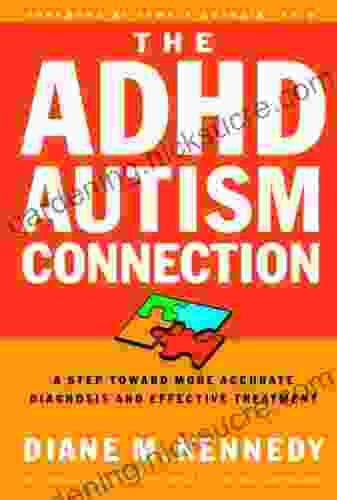Principles of Epidemiology: A Comprehensive Guide for Advanced Nursing Practice

Epidemiology is a cornerstone of advanced nursing practice, providing nurses with the knowledge and skills to investigate health patterns, identify risk factors, and design interventions to improve population health outcomes. This article delves into the principles of epidemiology, empowering nurses with the ability to make informed decisions based on evidence-based data.
Core Concepts of Epidemiology
Definition and Scope
Epidemiology is the study of the distribution and determinants of health-related states or events in defined populations. It incorporates the principles of biology, statistics, and social sciences to investigate the causes and patterns of disease and injury.
4.3 out of 5
| Language | : | English |
| File size | : | 23228 KB |
| Text-to-Speech | : | Enabled |
| Screen Reader | : | Supported |
| Enhanced typesetting | : | Enabled |
| Print length | : | 318 pages |
Dimensions of Epidemiology
Epidemiology involves three primary dimensions:
- Time: Studying the temporal distribution of health outcomes over time
- Place: Examining geographic variations in health patterns
- Person: Identifying individual characteristics and behaviors associated with health outcomes
Levels of Prevention
Epidemiology plays a crucial role in implementing and evaluating preventive measures. It distinguishes between three levels of prevention:
- Primary Prevention: Preventing the occurrence of disease or injury before it manifests
- Secondary Prevention: Detecting and treating disease or injury in its early stages
- Tertiary Prevention: Managing chronic conditions and preventing further complications or disabilities
Epidemiological Measures
Frequency Measurement
Incidence and prevalence are two key measures of frequency in epidemiology:
- Incidence: The number of new cases of a disease occurring within a specified time period in a population
- Prevalence: The total number of cases of a disease present in a population at a specific point in time
Association Measures
Epidemiology also quantifies the association between risk factors and health outcomes using measures such as:
- Relative Risk: The ratio of the risk of a health outcome in exposed individuals to the risk in unexposed individuals
- Odds Ratio: The ratio of the odds of a health outcome in exposed individuals to the odds in unexposed individuals
- Attributable Risk: The proportion of a health outcome that can be attributed to a specific risk factor
Epidemiological Studies
Study Designs
Epidemiologists use various study designs to investigate health patterns, including:
- Observational Studies: Individuals are followed over time to observe their health status and exposure to risk factors
- Experimental Studies: Participants are randomly assigned to different interventions or exposures to assess their effects
Types of Observational Studies
Observational studies include the following types:
- Cohort Studies: Follow individuals who have been exposed to a risk factor and track their health outcomes over time
- Case-Control Studies: Compare individuals with a specific disease or health condition (cases) to those without the condition (controls)
- Cross-Sectional Studies: Observe a population at a single point in time to determine the prevalence of health outcomes and risk factors
Application in Advanced Nursing Practice
Epidemiology is essential for advanced practice nurses in:
Surveillance and Monitoring
Monitoring health trends and identifying outbreaks or emerging health threats
Disease Prevention and Control
Developing and implementing interventions to reduce the incidence and prevalence of preventable diseases
Health Promotion
Promoting healthy behaviors and reducing risk factors for chronic conditions
Evaluation of Nursing Interventions
Assessing the effectiveness of nursing interventions and improving patient outcomes
Principles of epidemiology provide a framework for nurses to understand and address health issues at the population level. By applying epidemiological knowledge and methods, advanced practice nurses can make data-driven decisions, improve health outcomes, and advance the field of nursing.
4.3 out of 5
| Language | : | English |
| File size | : | 23228 KB |
| Text-to-Speech | : | Enabled |
| Screen Reader | : | Supported |
| Enhanced typesetting | : | Enabled |
| Print length | : | 318 pages |
Do you want to contribute by writing guest posts on this blog?
Please contact us and send us a resume of previous articles that you have written.
 Fiction
Fiction Non Fiction
Non Fiction Romance
Romance Mystery
Mystery Thriller
Thriller SciFi
SciFi Fantasy
Fantasy Horror
Horror Biography
Biography Selfhelp
Selfhelp Business
Business History
History Classics
Classics Poetry
Poetry Childrens
Childrens Young Adult
Young Adult Educational
Educational Cooking
Cooking Travel
Travel Lifestyle
Lifestyle Spirituality
Spirituality Health
Health Fitness
Fitness Technology
Technology Science
Science Arts
Arts Crafts
Crafts DIY
DIY Gardening
Gardening Petcare
Petcare Edward Rosenfeld
Edward Rosenfeld A R Bernard
A R Bernard Natasha Preston
Natasha Preston Cindy Kennedy
Cindy Kennedy Icon Digital Publishing
Icon Digital Publishing Samantha Lovely
Samantha Lovely Geoffrey West
Geoffrey West Kristine Setting Clark
Kristine Setting Clark Jeffrey A Greene
Jeffrey A Greene Theris A Touhy
Theris A Touhy Subsequent Edition Kindle Edition
Subsequent Edition Kindle Edition Jason Curtis
Jason Curtis Robert Peter Gale
Robert Peter Gale Daphne Adler
Daphne Adler Jay Cassell
Jay Cassell Louis Liebenberg
Louis Liebenberg Marie Louise Von Franz
Marie Louise Von Franz Hong Chen
Hong Chen Gregory A Boyd
Gregory A Boyd William Regal
William Regal Kerry Fraser
Kerry Fraser Claire Sierra
Claire Sierra Mauricio Cabrini
Mauricio Cabrini Bruno Latour
Bruno Latour Bruce Watson
Bruce Watson Alessa Ellefson
Alessa Ellefson Bryan Smith
Bryan Smith Robert Ferguson
Robert Ferguson Micah Goodman
Micah Goodman Rowan Ricardo Phillips
Rowan Ricardo Phillips P G Maxwell Stuart
P G Maxwell Stuart Frank Sargeant
Frank Sargeant Marcia Verduin
Marcia Verduin Monica Sorrenson
Monica Sorrenson George Pendle
George Pendle Wong Kiew Kit
Wong Kiew Kit J D Salinger
J D Salinger E Bruce Goldstein
E Bruce Goldstein Andrew Maraniss
Andrew Maraniss Claire Baker
Claire Baker Katie J Trent
Katie J Trent Christopher Lakeman
Christopher Lakeman Adam Silvera
Adam Silvera Joe Oliver
Joe Oliver Roger Gordon
Roger Gordon Eric Dominy
Eric Dominy Dan Blackburn
Dan Blackburn Sheryl Crow
Sheryl Crow Andrew G Marshall
Andrew G Marshall Theresa Cheung
Theresa Cheung Deanne Howell
Deanne Howell Peter Wohlleben
Peter Wohlleben Stewart Smith
Stewart Smith Gail Craswell
Gail Craswell Jong Chul Ye
Jong Chul Ye Theodore X O Connell
Theodore X O Connell Muata Ashby
Muata Ashby Jo Frost
Jo Frost Lareina Rule
Lareina Rule Grant Thompson
Grant Thompson Kekla Magoon
Kekla Magoon Olszewski Marie Erin
Olszewski Marie Erin Karen Myers
Karen Myers Bill Reif
Bill Reif Allan Mundsack
Allan Mundsack Melissa Cheyney
Melissa Cheyney Janetti Marotta
Janetti Marotta Gershon Ben Keren
Gershon Ben Keren David Lloyd Kilmer
David Lloyd Kilmer Leigh Calvez
Leigh Calvez Kristen Riecke
Kristen Riecke Sandra Mizumoto Posey
Sandra Mizumoto Posey Elizabeth Bradfield
Elizabeth Bradfield Manhattan Prep
Manhattan Prep James Diego Vigil
James Diego Vigil Laurie Forest
Laurie Forest Paul Deepan
Paul Deepan 6th Edition Kindle Edition
6th Edition Kindle Edition Greg Midland
Greg Midland Michael S Gazzaniga
Michael S Gazzaniga Kennedy Achille
Kennedy Achille Lars Behnke
Lars Behnke Andrea Wulf
Andrea Wulf Jim Burns
Jim Burns Dr Brenda Stratton
Dr Brenda Stratton Cynthia Bourgeault
Cynthia Bourgeault Lesli Richards
Lesli Richards Mark Hatmaker
Mark Hatmaker Buddy Martin
Buddy Martin Dervla Murphy
Dervla Murphy Pamela Adams
Pamela Adams Miko Flohr
Miko Flohr Heather Job
Heather Job Amy Ogle
Amy Ogle Kerri Maniscalco
Kerri Maniscalco Sloane Mcclain
Sloane Mcclain Dinokids Press
Dinokids Press Oliver Theobald
Oliver Theobald John Hands
John Hands A Digger Stolz
A Digger Stolz Mark V Wiley
Mark V Wiley Stefan Hofer
Stefan Hofer Andrew Collins
Andrew Collins Andre Norton
Andre Norton Susan Walker
Susan Walker Cassandra Johnson
Cassandra Johnson Mitch Rubman
Mitch Rubman Kevin Paul
Kevin Paul Broccoli Lion
Broccoli Lion Tim R Wolf
Tim R Wolf Michael Romano
Michael Romano Terence N D Altroy
Terence N D Altroy Jeff Gill
Jeff Gill Bernard Rosner
Bernard Rosner Starley Talbott
Starley Talbott Chase Williams
Chase Williams Mohamed Elgendy
Mohamed Elgendy Suzie Cooney
Suzie Cooney Brian Kent
Brian Kent Ben Egginton
Ben Egginton Dan Falk
Dan Falk Jordan Ifueko
Jordan Ifueko Steven D Levitt
Steven D Levitt 7th Edition Kindle Edition
7th Edition Kindle Edition Pat Dorsey
Pat Dorsey J Morgan Mcgrady
J Morgan Mcgrady Neal Bascomb
Neal Bascomb Laura Bright
Laura Bright Howard Mudd
Howard Mudd Jd Brown
Jd Brown Riddleland
Riddleland Miranda Castro
Miranda Castro 2nd Edition Kindle Edition
2nd Edition Kindle Edition Alden Jones
Alden Jones Josh Mulvihill
Josh Mulvihill Jay Wilkinson
Jay Wilkinson Alan Jacobs
Alan Jacobs Lenora Ucko
Lenora Ucko Justin Doyle
Justin Doyle Kenny Casanova
Kenny Casanova Nadav Snir
Nadav Snir Al Ford
Al Ford Peter Cossins
Peter Cossins Jack M Bloom
Jack M Bloom 3rd Ed Edition Kindle Edition
3rd Ed Edition Kindle Edition Caroline Porter Thomas
Caroline Porter Thomas Tom Lyons
Tom Lyons Jamie Hand
Jamie Hand Thomas Wentworth Higginson
Thomas Wentworth Higginson Kelly Slater
Kelly Slater Ellen Sue Turner
Ellen Sue Turner 8th Edition Kindle Edition
8th Edition Kindle Edition Bobby Blair
Bobby Blair A C Davison
A C Davison Manuel De La Cruz
Manuel De La Cruz David Kushner
David Kushner Raymond H Thompson
Raymond H Thompson Brennan Barnard
Brennan Barnard Brian Thompson
Brian Thompson Michael Clarke
Michael Clarke Karl Morris
Karl Morris Carl J Sindermann
Carl J Sindermann Oscar Wegner
Oscar Wegner Linda A Roussel
Linda A Roussel Harry Middleton
Harry Middleton Z Justin Ren
Z Justin Ren Lois Duncan
Lois Duncan Elizabeth Wenk
Elizabeth Wenk John A Yoegel
John A Yoegel Deepak Chopra
Deepak Chopra Dave Gerr
Dave Gerr Dan Wingreen
Dan Wingreen Steve Garnett
Steve Garnett Gianni La Forza
Gianni La Forza Collins Gcse
Collins Gcse Steve Kantner
Steve Kantner Kyla Stone
Kyla Stone Maureen Johnson
Maureen Johnson Jeremy Desilva
Jeremy Desilva Steve Magness
Steve Magness Barnett Rich
Barnett Rich Martin Mobraten
Martin Mobraten 50minutos Es
50minutos Es Louis Stanislaw
Louis Stanislaw Leonard Pellman
Leonard Pellman Josh Elster
Josh Elster Christopher Mcdougall
Christopher Mcdougall 4th Edition Kindle Edition
4th Edition Kindle Edition James D Long
James D Long Iris Bohnet
Iris Bohnet Vibrant Publishers
Vibrant Publishers 5th Edition Kindle Edition
5th Edition Kindle Edition Joseph Chilton Pearce
Joseph Chilton Pearce Justin Bower
Justin Bower Debra Pascali Bonaro
Debra Pascali Bonaro Lee Smolin
Lee Smolin Skye Genaro
Skye Genaro Erika Bornman
Erika Bornman Duy Tran
Duy Tran Theodor W Adorno
Theodor W Adorno Sam Irwin
Sam Irwin Tom Pyszczynski
Tom Pyszczynski Dr Danny Penman
Dr Danny Penman Tom Mchale
Tom Mchale David Beaupre
David Beaupre Gregory J Privitera
Gregory J Privitera Freda Mcmanus
Freda Mcmanus Jiichi Watanabe
Jiichi Watanabe Max Domi
Max Domi Mark Gregston
Mark Gregston Nate G Hilger
Nate G Hilger Bob Welch
Bob Welch Nancy Keene
Nancy Keene Sam Goulden
Sam Goulden Alice Ginott
Alice Ginott Gina Rae La Cerva
Gina Rae La Cerva Martha Menchaca
Martha Menchaca Breanna Lam
Breanna Lam Chris Stewart
Chris Stewart Patricia S Potter Efron
Patricia S Potter Efron Jessica Shortall
Jessica Shortall Gary S Thorpe
Gary S Thorpe Gregory Collins
Gregory Collins Elaine Beaumont
Elaine Beaumont 4th Edition Kindle Edition With Audio Video
4th Edition Kindle Edition With Audio Video L S Boos
L S Boos Richard Adams
Richard Adams George W E Nickelsburg
George W E Nickelsburg Don Fink
Don Fink Mike Tyson
Mike Tyson Richard Bromfield
Richard Bromfield 1st Ed 2016 Edition Kindle Edition
1st Ed 2016 Edition Kindle Edition Eloise Jarvis Mcgraw
Eloise Jarvis Mcgraw Susan E Cayleff
Susan E Cayleff Jacquetta Hawkes
Jacquetta Hawkes Naomi Feil
Naomi Feil Justine Brooks Froelker
Justine Brooks Froelker Bree Moore
Bree Moore Robert K Tyson
Robert K Tyson Margaret Littman
Margaret Littman David Simkins
David Simkins Liesbet Collaert
Liesbet Collaert Leonardo Trasande
Leonardo Trasande Chris Dietzel
Chris Dietzel 3rd Edition Kindle Edition
3rd Edition Kindle Edition Monte Burch
Monte Burch Greta Solomon
Greta Solomon Joseph E Garland
Joseph E Garland Chris Lehto
Chris Lehto Kate Spencer
Kate Spencer Patrick Hunt
Patrick Hunt Dustyn Roberts
Dustyn Roberts John Gribbin
John Gribbin Kelly Skeen
Kelly Skeen Jasmine Greene
Jasmine Greene Russell Miller
Russell Miller Prerna Lal
Prerna Lal Ellen Levitt
Ellen Levitt Jason Miller
Jason Miller Eli Boschetto
Eli Boschetto Peter Dewhurst
Peter Dewhurst Dr Katayune Kaeni
Dr Katayune Kaeni Stephen P Anderson
Stephen P Anderson Meik Wiking
Meik Wiking Christy Jordan
Christy Jordan Nikki Grimes
Nikki Grimes A C Grayling
A C Grayling Alec Crawford
Alec Crawford Janet Sasson Edgette
Janet Sasson Edgette Brenda Dehaan
Brenda Dehaan Michael Alvear
Michael Alvear Mary H K Choi
Mary H K Choi Nnedi Okorafor
Nnedi Okorafor 2005th Edition Kindle Edition
2005th Edition Kindle Edition Gayle Jervis
Gayle Jervis Geri Ann Galanti
Geri Ann Galanti Joe Cuhaj
Joe Cuhaj Keith Siragusa
Keith Siragusa John Collins
John Collins Robert Venditti
Robert Venditti William A Dembski
William A Dembski Apsley Cherry Garrard
Apsley Cherry Garrard Andrew Shapland
Andrew Shapland Jean Clottes
Jean Clottes Emma Dalton
Emma Dalton Terence Grieder
Terence Grieder John Kreiter
John Kreiter Patricia O Quinn
Patricia O Quinn Joe Chilson
Joe Chilson A Christine Harris
A Christine Harris Bernard Cornwell
Bernard Cornwell J Michael Leger
J Michael Leger Natalie Smith
Natalie Smith Lin Pardey
Lin Pardey Lj Rivers
Lj Rivers Tok Hui Yeap Rd Csp Ld
Tok Hui Yeap Rd Csp Ld Eva Feder Kittay
Eva Feder Kittay Terrence Real
Terrence Real Robert S Mueller
Robert S Mueller Sadie Radinsky
Sadie Radinsky Mimi Lemay
Mimi Lemay Clint Malarchuk
Clint Malarchuk Jenifer Fox
Jenifer Fox Edyta Roszko
Edyta Roszko Heather Demetrios
Heather Demetrios Leslie Leyland Fields
Leslie Leyland Fields Emily A Duncan
Emily A Duncan John Gookin
John Gookin Sherry Monahan
Sherry Monahan Chris Froome
Chris Froome Edward Frenkel
Edward Frenkel Nick Winkelman
Nick Winkelman Dalai Lama
Dalai Lama Mei Fong
Mei Fong Fata Ariu Levi
Fata Ariu Levi Robert Pondiscio
Robert Pondiscio Rick Gurnsey
Rick Gurnsey John Coleman
John Coleman James Mcnicholas
James Mcnicholas Jon Dunn
Jon Dunn Eric Haseltine
Eric Haseltine Simon G Thompson
Simon G Thompson Porter Fox
Porter Fox Anthony Arvanitakis
Anthony Arvanitakis Dominik Hartmann
Dominik Hartmann Lucas Whitecotton
Lucas Whitecotton Nathalie Dupree
Nathalie Dupree Katie M John
Katie M John Tony Hernandez Pumarejo
Tony Hernandez Pumarejo L Madison
L Madison Chris I Naylor
Chris I Naylor Aly Madhavji
Aly Madhavji Shonna Slayton
Shonna Slayton Justin Hammond
Justin Hammond Christa Orecchio
Christa Orecchio John Iceland
John Iceland 2012th Edition Kindle Edition
2012th Edition Kindle Edition Tyler Vanderweele
Tyler Vanderweele Tami Lynn Kent
Tami Lynn Kent Yan Shen
Yan Shen Aubrey Clayton
Aubrey Clayton Heather Rain Mazen Korbmacher
Heather Rain Mazen Korbmacher Amy Chua
Amy Chua Seymour Simon
Seymour Simon 1st English Ed Edition Kindle Edition
1st English Ed Edition Kindle Edition Tony Horton
Tony Horton Michael Geheran
Michael Geheran Claudio De Castro
Claudio De Castro Evan Brashier
Evan Brashier Patricia Stevens
Patricia Stevens Jonathan Ross
Jonathan Ross Jamaica Stevens
Jamaica Stevens Charles Seife
Charles Seife Syougo Kinugasa
Syougo Kinugasa Filipe Masetti Leite
Filipe Masetti Leite Billie Jean King
Billie Jean King Patrick Lange
Patrick Lange G I Gurdjieff
G I Gurdjieff Rashad Jennings
Rashad Jennings Paul Martin
Paul Martin Carol Stock Kranowitz
Carol Stock Kranowitz Marisha Pessl
Marisha Pessl Brooklyn James
Brooklyn James L Ulloque
L Ulloque Elizabeth D Hutchison
Elizabeth D Hutchison Tasha Dunn
Tasha Dunn Raymond Buckland
Raymond Buckland Leon Anderson
Leon Anderson John Green
John Green Diamond Wilson
Diamond Wilson Juno Dawson
Juno Dawson Temple Grandin
Temple Grandin 006 Edition Kindle Edition
006 Edition Kindle Edition Shelby Hailstone Law
Shelby Hailstone Law Rifujin Na Magonote
Rifujin Na Magonote 1st Edition Kindle Edition
1st Edition Kindle Edition Sarah Templeton
Sarah Templeton Whit Honea
Whit Honea 50minutes Com
50minutes Com Emma Lord
Emma Lord Patricia Moore Pastides
Patricia Moore Pastides Eric I Karchmer
Eric I Karchmer Ulla Sarmiento
Ulla Sarmiento Donna M Mertens
Donna M Mertens Kristi K Hoffman
Kristi K Hoffman Bookrags Com
Bookrags Com Barbara Klein
Barbara Klein Christoph Delp
Christoph Delp Jillian Dodd
Jillian Dodd Bertolt Brecht
Bertolt Brecht Jasper Godwin Ridley
Jasper Godwin Ridley Naomi Scott
Naomi Scott Robert Thurston
Robert Thurston Marty Bartholomew
Marty Bartholomew Robert Mcentarffer
Robert Mcentarffer Herbert Feigl
Herbert Feigl Andrew Weber
Andrew Weber Jozef Nauta
Jozef Nauta David Cheng
David Cheng Michaela Stith
Michaela Stith Paul Johnson
Paul Johnson Ziemowit Wojciechowski
Ziemowit Wojciechowski Mark Brazil
Mark Brazil Ernest Shackleton
Ernest Shackleton Andy Charalambous
Andy Charalambous Roselyn Teukolsky
Roselyn Teukolsky Bonnie Scott
Bonnie Scott Jacqueeia Ferguson
Jacqueeia Ferguson Richard Ania
Richard Ania Robert Bauval
Robert Bauval Michael W Ford
Michael W Ford Lewis Henry Morgan
Lewis Henry Morgan Nathan Jendrick
Nathan Jendrick Tracy Gharbo
Tracy Gharbo Patrick Viafore
Patrick Viafore Ricki E Kantrowitz
Ricki E Kantrowitz Elizabeth Sims
Elizabeth Sims Patrick E Mcgovern
Patrick E Mcgovern Thomas R Baechle
Thomas R Baechle Garrett Grolemund
Garrett Grolemund Debra Barnes
Debra Barnes Robert A Johnson
Robert A Johnson Kate Usher
Kate Usher Glenn N Levine
Glenn N Levine Betty Crocker
Betty Crocker Diane Duane
Diane Duane
Light bulbAdvertise smarter! Our strategic ad space ensures maximum exposure. Reserve your spot today!
 Floyd PowellFollow ·19k
Floyd PowellFollow ·19k Albert ReedFollow ·15.3k
Albert ReedFollow ·15.3k Vincent MitchellFollow ·8.6k
Vincent MitchellFollow ·8.6k Jorge Luis BorgesFollow ·18.5k
Jorge Luis BorgesFollow ·18.5k Ernesto SabatoFollow ·13.4k
Ernesto SabatoFollow ·13.4k Camden MitchellFollow ·6.6k
Camden MitchellFollow ·6.6k Juan RulfoFollow ·5.7k
Juan RulfoFollow ·5.7k Jonathan HayesFollow ·8.8k
Jonathan HayesFollow ·8.8k

 Finn Cox
Finn CoxA Comprehensive Guide for Budding Inventors and Backyard...
For those with a restless mind and a...

 Forrest Reed
Forrest ReedThe Ultimate Shopper's Guide to Purchasing Weight Lifting...
Are you looking...

 Dillon Hayes
Dillon HayesThe Chemical Choir: Unveiling the Enchanting Symphony of...
In the enigmatic realm of science, where...

 Ryūnosuke Akutagawa
Ryūnosuke AkutagawaStumbling Thru: Hike Your Own Hike
In the realm of outdoor adventures,...

 Terry Pratchett
Terry PratchettUnlock Your Math Skills: A Comprehensive Guide to Chenier...
Math plays a vital role in...
4.3 out of 5
| Language | : | English |
| File size | : | 23228 KB |
| Text-to-Speech | : | Enabled |
| Screen Reader | : | Supported |
| Enhanced typesetting | : | Enabled |
| Print length | : | 318 pages |














